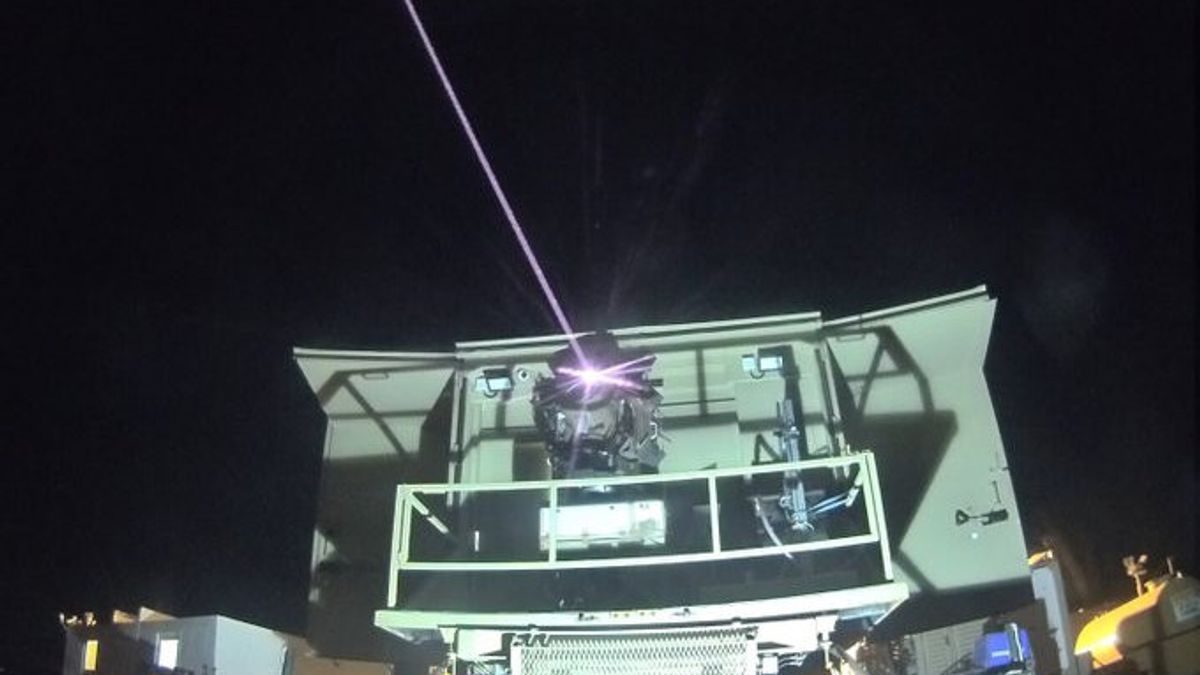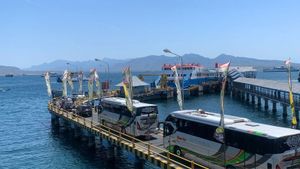JAKARTA - Israel's complex missile defense network faced heavy tests on Saturday night, April 13 managed to fend off 99 percent' of airstrikes launched from Iran. About 170 Iranian drones, 120 ballistic missiles, and more than 30 cruise missiles have been launched from Iran's territory in the attack, crossing more than 1,100 miles.
Iran's Phalanx missiles were repulsed by ground-based anti-air missiles with names such as Iron Dome, David's Sling, and arrow-3,' the latest hardware in Israel's frequently updated national defense arsenal.
The following is an overview of the equipment Israel has developed, sometimes with the help of American military contractors, and how it works to keep bombardir attacks.
Iron Dome
Iron Dome first operated in 2011, facing its first test more than a decade ago, when militants in Gaza fired about 1,500 rockets into Israel for eight days in November 2014.
In its decades of operation, officials from the Israeli Defense Forces reported the success rate of this system 90 percent: statistics that are difficult to assess considering the system is designed to catch up only rockets on the real damage line.
Each 1 in 10 existing Iron Dome missile batteries is equipped with radar to detect air targets and connections to the command and automatic control system for long-range firing calculations.
When one of the Dome missile batteries detects a rocket on the radar, it forwards projectile velocity and trajectory data to its control center, which then uses the information to determine whether the rocket is likely to hit a populated area.
A missile is fired from a matrix of 20 battery interceptor missiles only if a detected rocket missile poses a real threat. This is a cost-saving step given the low-tech rocket showers fired by Hamas, Hezbollah, and other regional militants, whose equipment tends to be less targeted.
Iron Beam
Israel's solution to the Iron Dome cost issue, the Iron Beam laser, is currently also under development. The Iron Beam 100-kilowatt laser is designed to intercept and detonate the threat of several rockets, artillery, mortars, and drones remotely.
"I've seen the system when I last went to Israel, I saw the first prototype," said Doug Bush, secretary of the US Army's assistant for acquisition, logistics and technology, in November. "That's interesting."
"There is potential if their property works well, it could be something we can consider taking advantage of our needs in that space," Bush told DefenseScop. He added that Iron Beam served as a complement to the Pentagon's Indirect Fire Protection Capability-High Energy Laser (IFPC-HEL) prototype.
Iran said it attacked Israel on Saturday night as a "self-defense" attempt following the April 1 attack on its diplomatic mission in Damascus, which Israel has widely masterminded.
Arrow-3
The latest and possibly the culmination of Israel's current system, Arrow-3, made specifically for dropping nuclear-armed ballistic missiles and other nonconventional weapons' - including those coming from outer space.
Israel's main military spokesman, Rear Admiral Daniel Badminton, said after last Saturday's attack that Arrow-3 had "proven itself against a large number of ballistic missiles" fired by Iran this weekend, although a much more conventional strain."
The Arrow-3 missile interceptor is significantly larger than the Iron Dome fired, which is usually only 6 inches wide and 10 feet long, but is still guided by state-of-the-art miniature sensors for more persistent short-range rocket attack threats.
The Arrow-3 missile is the opposite of a substantial two-stage rocket, 23 feet or 7 meters long or 7 meters long, which can move at hypersonic speeds.
Prior to Saturday's attack, the Arrow-3 had been used to attack long-range missiles launched from Yemen by Houthi militants, who were involved in civil war on the southern tip of the Arabian Peninsula and had voted for sides in the Israeli Gaza conflict.
US military contractor Boeing and Israeli government-owned company Aerospace Industries are working together to develop Arrow-3 with massive investments from the United States.
The success of this space-ready interceptor missile has now led to an agreement worth US$3.5 billion, approved by the US, which allows Israel to sell its Arrow-3 system to Germany.
SEE ALSO:
David's Sling
Like Arrow-3, David's Sling, formerly called Magic Wand, is a two-stage rocket with a strong range to intercept larger missiles. This anti-air missile has a range of 160 miles and can move at speeds of up to 7.5 Mach.
According to the Missile Threat Project at the Center for International and Strategic Studies (CSIS), the system uses both Stunner and SkyCeptor kinetics called hit to kill interceptors.
This anti-air missile has a range of more than 160 miles and can move at a speed that blinds it to 7.5 Mach.
SkyCeptors, in particular, are designed to replace US-made Patriot missiles that are more cost effective but not less effective.
Each of these interceptors has two targeting systems and a guide mounted on the tip of the nose of the missile, along with an electro-optical sensor for further identification of its targets.
David's Sling is a collaboration between Israeli defense company Rafael Advanced Defense Systems and US defense title Raytheon, which has made everything from fighter jet radars to NSA hearing posts for American national security officials.
Sling, of course, took his name from the famous weapon used by King Daud in a Bible story about Daud and tendu, but the name was also intended to refer to his long-range range.
"We will be able to intercept threats at high altitudes in enemy territory, not exactly above Israel," one official Rafael told the Associated Press. We don't want it to fall on us, but above the enemy.
Initially, this joint project was developed to specifically combat medium-range missiles reportedly owned by the Hezbollah militant group in Lebanon, north of Israel.
But other US allies are now pursuing Raytheon's partnership for their own version of SkyCeptor - including Romania, which started a three-year investment project in 2023 to build interceptor missiles, in part, due to a prolonged conflict in close Ukraine.
The English, Chinese, Japanese, Arabic, and French versions are automatically generated by the AI. So there may still be inaccuracies in translating, please always see Indonesian as our main language. (system supported by DigitalSiber.id)

















